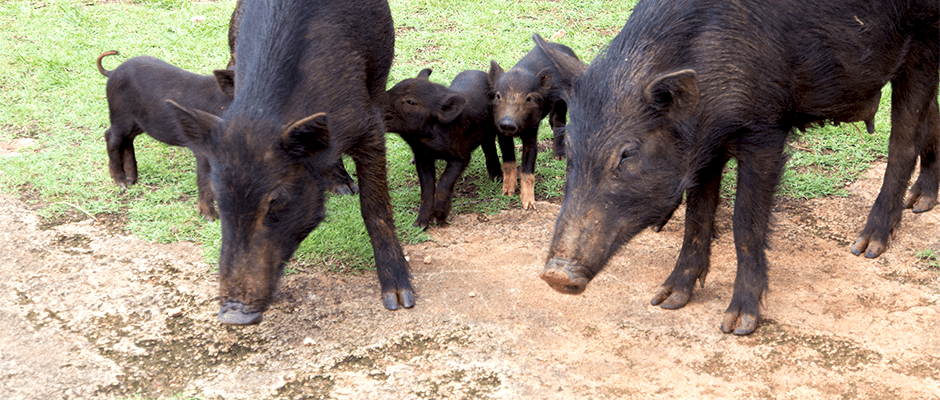Share this article
Could feral hogs be aiding Guam’s forests?
Feral hogs are notorious for the damage they do to property and the environment, but in Guam, where they’re culled in some areas to limit their impact, researchers found that keeping them alive may offset some of the harm done by another nonnative.
When the brown tree snake (Boiga irregularis) invaded Guam, it annihilated the island’s seed-spreading birds and inhibited the regeneration of its forests. But biologists recently discovered that the wild pig (Sus scrofa) could fill in as a seed disperser for several native species and help conserve wildlife habitat in Guam.
“Pigs are offering a bit of a service because there aren’t many vertebrate seed dispersers in the forest,” said Ann Marie Gawel, first author on the study published in Royal Society Open Science. “Without things dispersing, a lot of tree generation might not be happening, so it’s important to have some disperser when making restoration plans. Ideally, it wouldn’t be pigs, but if you’re getting rid of these animals and don’t have birds, you won’t have a functioning forest.”
A doctoral candidate at Iowa State University, Gawel and her fellow researchers examined feral hogs in the limestone karst forests of northern Guam, which sit on raised fossil coral reefs that are too jagged and rocky for the pigs to destructively root and dig. Spanish colonizers had transported the animals to the island as livestock in the late 1600s. From 2009 to 2011, the scientists collected scats from pigs and another extremely abundant species the Spaniards brought to Guam, the Philippine deer (Rusa marianna), and noted what grew from the droppings after depositing them in a nursery.
“We saw a lot of seedlings pop out of the pig scats, whereas only a few popped out of the deer scats,” Gawel said. “A couple coming out of the pig scats are native species. There are management plans moving forward in Guam to get rid of ungulates. If we don’t have birds and get rid of pigs, we have to have tempered expectations of what’s going to grow back.”
These findings conflict with ones from elsewhere in the U.S. and Southeast Asia, she said, where invasive wild pigs rooting around have adversely affected forests. In Hawaii, they’ve been shown to spread detrimental nonnative seeds. But at the same time, Gawel’s paper mirrors new research revealing that feral hogs in New Zealand disperse a rare native plant’s seeds.
“Looking at nuances and being open to determining the potential benefits from species we think of as harmful is important, to not let our biases as conservation managers get in the way of looking at ecological roles to better plan wildlife management,” she said.
Apart from delving into how Guam’s forests are transforming without birds, Gawel plans to further investigate what pigs disperse by conducting feeding trials this summer and observing whether the ungulates’ gut removes fruit from seeds and improves their chances of germinating.
“Some people think of Guam as this ecological nightmare,” she said. “However, there’s still a lot of interesting things going on and a lot we can do to save the functions of the forest as well as the species absolutely worth studying and protecting.”
Header Image: A family of wild pigs explore a patch of ground in Guam. ©Yuxuan Wang








